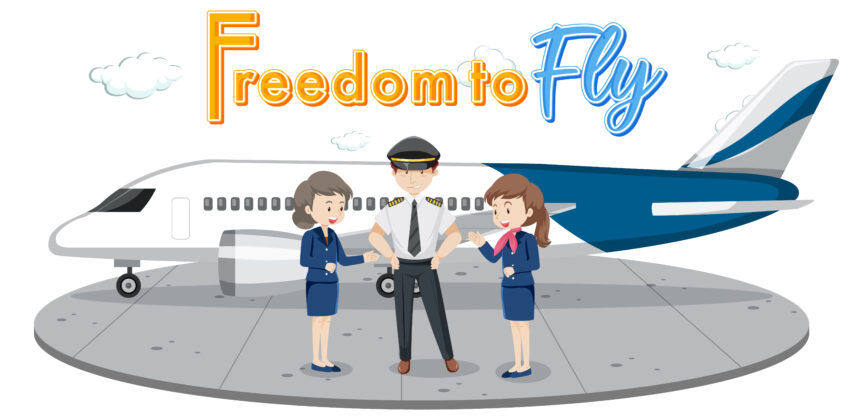Flight Safety International Vice President Technology
Understanding Flight Safety International
Flight Safety International has long been a recognized leader in aviation safety and training. Offering state-of-the-art flight simulators, crew training programs, and flight data monitoring systems, the company ensures that aviation professionals are prepared to handle any situation. Its contributions to aviation safety are unmatched, providing the industry with training tools that emulate real-world conditions for pilots, crew members, and maintenance teams.
The Role of Technology in Aviation Safety
Technology has revolutionized the aviation industry, especially in the realm of safety. Advanced flight simulators have become an essential part of pilot training, allowing trainees to experience virtually any flight scenario without risk. In addition, real-time safety monitoring systems help detect potential hazards before they escalate, providing a proactive approach to safety.
Technological Advances in Flight Training
Flight simulators have come a long way. Today’s simulators offer a highly immersive training experience with visual systems that mimic real-life environments, realistic cockpit designs, and response mechanisms that replicate aircraft behavior. These tools are critical in ensuring pilots are prepared for emergencies.
Innovations in Flight Simulators
Flight simulators have become increasingly sophisticated, incorporating advanced virtual reality (VR) and augmented reality (AR) to further enhance training. These innovations provide a more engaging and realistic training environment, where trainees can practice complex maneuvers, emergency procedures, and real-time problem-solving without putting anyone at risk.
Real-time Safety Monitoring Systems
Real-time safety monitoring systems have allowed for continuous tracking of flight data, enabling the identification of issues before they become dangerous. This includes monitoring flight speed, altitude, and navigation systems, ensuring everything is functioning optimally throughout the journey.
The Vice President of Technology: A Key Leadership Role
The Vice President of Technology at Flight Safety International is tasked with overseeing the development and integration of new technologies into the company’s offerings. They are responsible for shaping the strategic direction of the organization’s technology initiatives, ensuring that advancements in safety technology are seamlessly implemented across training programs, flight simulators, and safety monitoring systems.
Responsibilities and Key Skills
As the VP of Technology, the responsibilities are immense, involving everything from managing teams of engineers and technicians to collaborating with other departments and external partners. Strong leadership, problem-solving skills, and an in-depth understanding of both aviation and technology are essential for success in this role.
The Strategic Vision for Technological Advancement
The VP of Technology’s vision is critical to driving Flight Safety International’s technological initiatives. They need to anticipate future trends, adopt emerging technologies, and integrate them into current systems to stay ahead of safety standards. Whether it’s incorporating AI into flight training or enhancing simulation software, their forward-thinking approach keeps the company on the cutting edge.
Technological Challenges in Aviation Safety
While technology has greatly enhanced aviation safety, it has also presented challenges. One significant issue is the security of digital systems, as the more reliant we become on technology, the more vulnerable we are to cyberattacks. Additionally, integrating new technologies into legacy systems can be a complex process, requiring careful planning and execution.
Cybersecurity Concerns in Flight Safety
As aviation increasingly depends on digital systems for training, navigation, and communication, cybersecurity has become a major concern. Ensuring that data remains secure and systems are resistant to hacking is vital to maintaining safety in the air.
Integration of New Technologies into Existing Systems
Integrating new technologies into existing aviation infrastructure is not always straightforward. It requires substantial investment, time, and testing to ensure that new tools and systems work in harmony with older equipment, all while maintaining the highest safety standards.
Technological Innovations Led by Flight Safety International
Flight Safety International is a pioneer in utilizing innovative technologies to improve training and safety.
Cutting-Edge Flight Simulators
Flight simulators have seen remarkable advancements, from more accurate cockpit displays to the ability to simulate a broader range of emergency scenarios. These improvements provide trainees with a more comprehensive understanding of flight operations and emergency procedures.
Virtual Reality and Augmented Reality Training
Virtual reality (VR) and augmented reality (AR) are transforming aviation training by offering immersive experiences that were previously unimaginable. Trainees can practice in a fully interactive environment that replicates real-world scenarios, from emergency landings to engine failures.
AI and Machine Learning in Flight Training
Artificial Intelligence (AI) and machine learning are being integrated into flight training to improve performance analysis and decision-making. AI can assess a trainee’s actions, predict potential areas for improvement, and provide real-time feedback, making training more efficient and targeted.
The Future of Flight Safety Technology
The future of aviation technology looks bright, with innovations continuing to emerge at a rapid pace.
Advancements in Autonomous Flight Systems
One of the most exciting frontiers in aviation is the development of autonomous flight systems. These systems could one day allow planes to operate without human intervention, enhancing safety by reducing the risk of human error.
Enhancements in Pilot Training Technology
The technology used for pilot training will continue to evolve, incorporating AI, VR, and AR to create even more lifelike training experiences. Future systems may include fully automated simulations that adapt to each trainee’s individual learning style.
The Role of Data Analytics in Aviation Safety
Data analytics is expected to play a crucial role in improving flight safety. By analyzing massive amounts of flight data, aviation experts can identify trends, anticipate potential risks, and develop strategies to mitigate them.
How Flight Safety International Maintains Leadership in Technology
Flight Safety International has consistently maintained its leadership position by investing heavily in research and development (R&D) and fostering partnerships with cutting-edge tech companies. By doing so, they ensure that their training programs and simulators are always at the forefront of technological advancements.
Investments in R&D
Continual investment in R&D ensures that Flight Safety International remains competitive and can develop new, safer technologies for aviation. Whether it’s improving simulator realism or integrating new safety protocols, R&D is at the heart of their strategy.
Partnerships with Tech Companies
Collaborating with leading tech companies allows Flight Safety International to integrate the latest innovations into their products. These partnerships often result in the development of breakthrough technologies that improve flight safety.
Continuous Training and Development
Flight Safety International invests in continuous training for its teams to stay up-to-date with the latest technological trends. This ensures that their workforce is always equipped to handle new tools and technologies.
The Impact of Flight Safety International’s Technological Leadership
Flight Safety International’s technological leadership has had a profound impact on the aviation industry. By improving pilot training and flight safety technology, the company has played a key role in reducing accidents and incidents.
Enhancing Pilot Proficiency
Reducing Accidents and Incidents
The company’s safety technology reduces aviation accidents, ensuring the safety of both passengers and crew.
Shaping Industry Standards
Challenges Faced by the VP of Technology in Flight Safety International
While the role of the Vice President of Technology at Flight Safety International is crucial, it comes with challenges.
Adapting to Rapid Technological Changes
With technology evolving so quickly, the VP of Technology must stay ahead of the curve, anticipating changes and ensuring the company’s offerings remain competitive and cutting-edge.
Balancing Innovation with Safety Regulations
The VP must also navigate the complex regulatory landscape of aviation, balancing the need for innovation with strict safety standards and regulations.
Technological Collaboration and Industry Partnerships
Flight Safety International drives its success by collaborating with various industry partners, including aviation authorities and technology innovators. These collaborations ensure that their products meet industry standards and continue to evolve.
Partnering with Aviation Authorities
By working closely with aviation authorities, Flight Safety International ensures that its technologies comply with international safety standards and regulations.
Collaborating with Tech Innovators
Collaborations with tech innovators allow Flight Safety International to integrate cutting-edge technologies into its systems, further enhancing safety and efficiency.
Flight Safety International’s Global Impact
Flight Safety International’s reach extends worldwide, influencing aviation safety protocols in multiple countries and regions. Its training solutions are used by airlines, military organizations, and aviation authorities around the globe.
Global Reach of its Training Solutions
Influence on Aviation Safety Protocols Worldwide
By setting new standards in flight training technology, Flight Safety International influences the development and implementation of aviation safety protocols worldwide.
The Vice President’s Role in Shaping the Future of Aviation
The Vice President of Technology is responsible for shaping the future of aviation safety by developing and implementing new technologies that will keep air travel safe for generations to come. Their vision is instrumental in driving the future of flight safety.
Vision for Future Technological Integration
The VP of Technology will continue to push for greater integration of autonomous systems, AI, and data analytics into aviation, ensuring a future where flight safety technology evolves alongside advancements in aviation.
Leading Technological Change in Aviation Safety
By leading technological change, the VP ensures that Flight Safety International stays at the forefront of aviation safety and continues to set the standard for the industry.
Conclusion
The role of the Vice President of Technology at Flight Safety International is vital in ensuring that the aviation industry continues to evolve safely and efficiently. By driving innovation and embracing new technologies, they are helping to shape the future of flight safety, ensuring that air travel remains one of the safest modes of transportation.
FAQs
What is the role of the Vice President of Technology at Flight Safety International?
The VP of Technology oversees the development and integration of new technologies to enhance flight safety and training programs.
How does Flight Safety International use technology to improve aviation safety?
The company uses advanced flight simulators, real-time safety monitoring systems, and innovative training tools like VR and AR to improve aviation safety.
What are some key technological innovations in flight safety?
Key innovations include flight simulators with enhanced realism, virtual and augmented reality training, AI-driven performance analysis, and autonomous flight systems.
How does Flight Safety International maintain leadership in aviation technology?
Flight Safety International invests in research and development, collaborates with tech companies, and continuously trains its teams to stay at the forefront of technology.
What is the future of flight safety technology?
The future includes advancements in autonomous flight, AI and data analytics in training, and enhanced flight simulators that provide a more immersive and effective learning experience.





